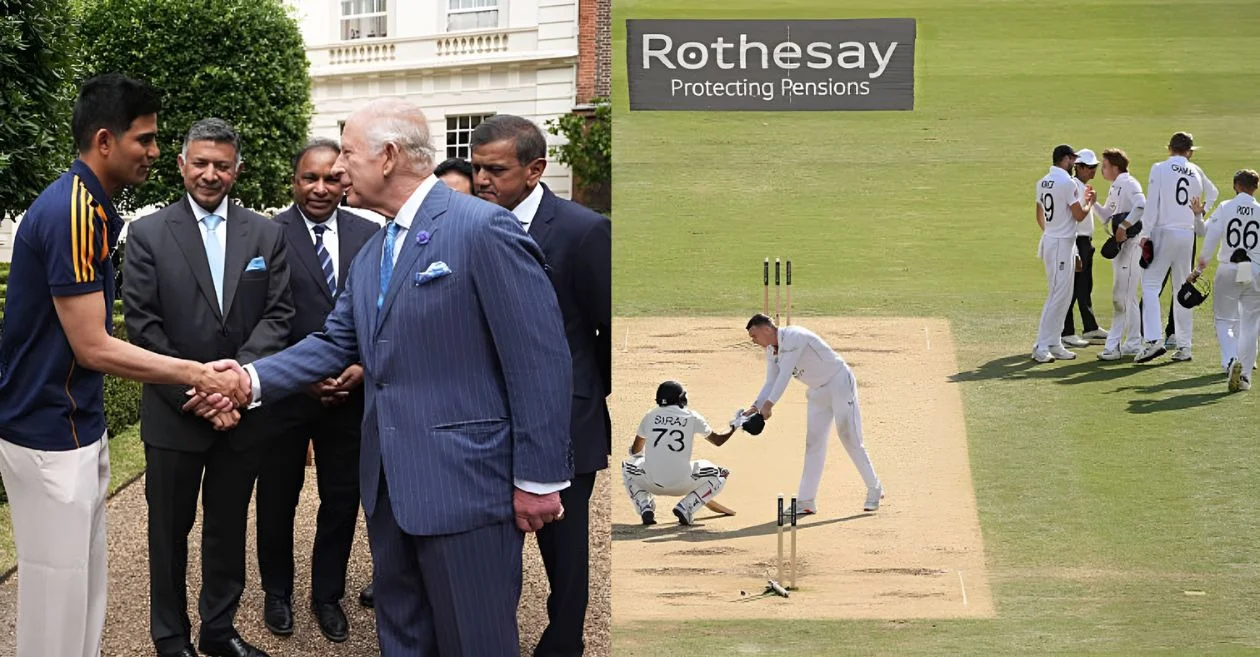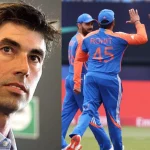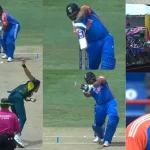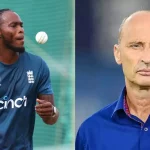London – In a memorable blend of sport, tradition, and empathy, His Majesty King Charles III warmly welcomed members of India’s men’s and women’s cricket teams to Clarence House on the afternoon of July 15, a day after India’s narrow but bruising 22-run defeat at Lord’s in the third Test of the iconic Anderson–Tendulkar Trophy.
Against the backdrop of political pomp, royal grandeur, and ceremonial regalia, there unfolded a moment of mortality, camaraderie, and freshly ignited determination—where cricket’s heartbreak found comfort in the gracious embrace of a monarch, and India’s wounded pride found perspective in conversation.
From Lord’s Heartbreak to Stately Consolation
The third Test at Lord’s had unfurled as a classic—a low-scoring dogfight, tireless defences, and a nervy final-day chase. With India set a target of 193, the stage belonged to their bowlers; but the return leg was lined with subtle heartbreak.
As Mohammed Siraj stood defiant at one end, Ravindra Jadeja his foil, crowd hopes swelled. But Siraj’s dismissal—bowled off a spinner, the bail clipped in cruel fashion—sealed the match for England. The narrow defeat tilted England into a 2–1 lead, and left the Indian team fragile but unbowed.
One day later, in the sanctuary of Clarence House, a different stage awaited.
A Monarch Who Knows Margin
King Charles III, though best known as an art patron and environmental steward, has long nurtured a quiet love for cricket. When he learned the Indian contingent would visit, he personally greeted them before the formal reception began.
India’s captain Shubman Gill, recalling the exchange, revealed a vivid memory: “He told us the way our last batsman (Siraj) got out… was ‘quite unfortunate, the ball rolling on the stumps’.”
At a moment when a game of cricket hinged on the microns by which a bail flickered off, a monarch acknowledged the frailty of fate with grace. In that brief, thoughtful remark, King Charles underscored how games are often defined not by intent but by chance.
Royal Warmth Amidst Defeat
The aura of royalty permeated Clarence House, but the King himself was approachable—leaning in, smiling, and actively listening. He met key players: Jasprit Bumrah, Rishabh Pant, KL Rahul, Yashasvi Jaiswal, Ravindra Jadeja, and head coach Gautam Gambhir. No lectern. No stiff formality. Just cricket conversation.
When he encountered Pant and Bumrah, an exchange of laughter marked the meeting—revealing a camaraderie that transcended status.
Pant, who arrived nursing a sore finger after his gritty 74 at Lord’s, and Bumrah, whose quiet confidence in seaming conditions has become legend, both smiled freely—momentarily relieved from the burden of loss.
A Royal Audience for Women’s Cricket
It wasn’t just the men’s team that gladdened the King’s presence. India’s women—fresh from their first-ever T20I series win on English soil (3–2)—also had the honour of an audience.
Within the Tudor architecture of Clarence House, where portraits of predecessors quietly observe, the women spoke of tactics, aspirations, and emerging confidence.
Underlining the sense of moment, this wasn’t a token gesture—it was a reflection of growing global attention on women’s cricket and recognition of the team’s landmark achievements.
Unexpected Encounter: Idris Elba Joins in
Adding to the afternoon’s theatre, British actor Idris Elba—known to fans as Luther and to moviegoers as Heimdall—made a surprise appearance. Before entering the King’s chambers, Gill, Pant, and Bumrah found themselves amidst Elba’s cheerful presence.
With the actor’s warmth and curiosity, the trio exchanged stories of Indian pavilions, post-match recoveries, and, likely, film recommendations. Such spontaneous crossover between cricket’s warriors and cinematic icons underscored sport’s unifying reach.
Sport and Statesmanship: The Bigger Picture
For a dynasty built on images, drama, and ceremony, these royal audiences played a role more strategic than symbolic.
The visit reaffirmed sport as soft diplomacy, where a gracious head of state recognizes effort without outcome-based bias. As India and England prepare for the fourth Test at Old Trafford (July 23) and final Test at The Oval (July 31), this visit reinforced respect—an underlying equality being established between nations and teams.
For India’s cricketers, the meeting became a moment to breathe, reflect, reset. To have the King’s empathy subtly hint—”history is watching, but so is grace”—can be as powerful as a century at the crease.
What Gill Said: Reflecting on Royal Encouragement
Gill’s words to ANI paint vivid strokes:
“King Charles… told us that the way our last batsman got out… was quite unfortunate… We told him that it was an unfortunate match for us and could have gone either way. Hopefully, we will have better luck in both the next games.”
Those few lines, relayed through media, beckon acknowledgement: despite loss and acrimony, the team remains dignified, optimistic, human.
Siraj’s Exit: A Moment of Pain, a Marker of Growth
Siraj’s final act at Lord’s—a low full toss, the bail dancing off—there are moments that hurt, and then there are moments that evolve.
His resolve in surviving 30 deliveries with Jadeja, under nightmarish conditions, signalled more than technique—it was grit. Turning to the meeting with the King, Siraj no doubt recognized that greatness begins with adversity, and adversity is when empathy means most.
England vs India Women and Men: Continuity in the Royal Roster
As King Charles bid farewell, the squad prepared to move north to Old Trafford and The Oval. But he offered a subtle reminder: cricket is more than runs and wickets—it’s also moments of connection.
For the women, preparing for their ODI leg with renewed purpose, and for the men, with wounded pride but clearer direction, this royal interlude served a message: that skill demands recognition, and loss deserves solace.
Legacy, Cricket, and Royalty
For centuries, the British monarchy has embraced cricket—King Edward VII attended county matches, Queen Elizabeth II knew the scorecards, and Charles himself has been spotted at Lords.
But this was different—it was not tourism. It was not celebration. It was empathy. It was cricket as a shared story—human, fragile, and powerful.
Looking Ahead: Tests at Old Trafford and The Oval
With the quadrilateral battleline redrawn (2–1), India’s mission becomes urgent:
-
Old Trafford Test (July 23–27) – A pitch known for pace and bounce.
-
Final Test at The Oval (July 31–August 4) – A traditional England fortress.
Hasaranga’s world-class spin, Pant’s effort despite injury, Siraj’s defiance—they are ready to be chapters written under pressure. The team enters with memory of the King’s words, and a clarity that every ball now counts.
Cricket Lives Beyond the Match
Cricket’s narratives often conclude at the boundary rope—but sometimes, they extend into drawing rooms, palace corridors, and the kindness between strangers.
The King’s visit wasn’t a spin tactic. It was an act—a gesture that dignifies struggle, humanizes competition, and bridges boundaries.
For a team that bled for Lord’s and left with a heartbreak wrapped in 22 runs, the solace came rubbing shoulders with royalty, and designation of a loss—not as failure, but as part of a beautiful, painful, always unfinished game.
And if such is the nature of sport, then Clarence House stands reaffirmed as one of its sanctuaries—where history lifts the fallen.
Please check for information on the best betting sites in India – https://selectory.org/best-betting-sites/















